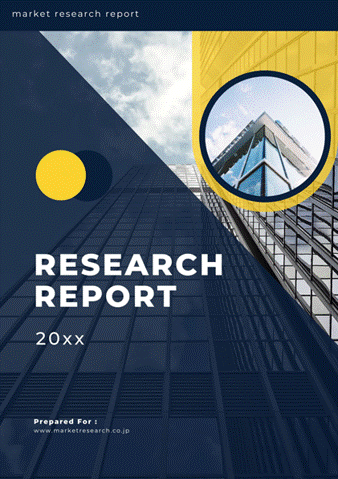 | • レポートコード:D0-MOR-AP1507 • 出版社/出版日:Mordor Intelligence / 2020年4月 • レポート形態:英文、PDF、100ページ • 納品方法:Eメール(受注後2-3営業日) • 産業分類:食品&飲料 |
| Single User | ¥555,000 (USD3,750) | ▷ お問い合わせ |
| Team User | ¥629,000 (USD4,250) | ▷ お問い合わせ |
| Corporate License | ¥1,036,000 (USD7,000) | ▷ お問い合わせ |
• お支払方法:銀行振込(納品後、ご請求書送付)
レポート概要
| 本調査レポートは、米タンパク質のアジア市場について調査・分析した資料で、米タンパク質の市場概要、動向、セグメント別市場規模、競争状況、企業情報、市場機会分析などで構成されています。 |
The Asia-Pacific rice protein market is expected to register a CAGR of 7.68%, during the forecast period, 2020-2025. Most of the major companies operating in this segment are approaching processed food manufacturers in order to encourage them to blend rice protein in a variety of products.
Countries, such as South Korea, Japan, and Hong Kong are expected to show a decline in rice consumption, owing to dietary changes, thereby, focusing more on the derivatives side, which can be utilized across processed food products as an ingredient.
The rice protein isolate segment is expected to account for the highest share during the forecast period.
Key Market Trends
Growing Application in Supplement Segment
Rice protein is considered as an alternative to the popular soy, pea, and milk protein. On the other hand, rice protein contains a high percentage of cystine and sulfur-containing amino acids. Due to a lack of lysine in rice protein, the product is blended with pea protein to balance the missing ingredient.
The growing awareness about health supplements, along with the growing population and increasing disposable incomes, is altogether driving the dietary supplement market in the region. Across countries, such as China, India, and Japan, the shifting consumer trend toward preventive healthcare, which further reduces healthcare expenses, has also contributed to the demand for nutrition products. This has led major manufacturers to engage in the manufacturing of supplements having a sole focus on the region and sourcing alt-protein that helps in increasing and innovating their existing product portfolio.
The trend of consuming allergen- and gluten-free, easy to digest, and Earth-friendly products are among the main factors that will facilitate and ramp up the demand for rice protein added dietary supplements in the region.
Cosmetics Likely to Offer Concrete Opportunities
Rice is rich in amino acids, vitamin E, ferulic acid, allantoin, and starch substances, which have a particularly important function for the good health of the body and skin. Rice proteins are obtained after processing of the rice with specific enzymes. The isolated powdery substance with a high concentration of nutrients is used as an additive to foods, drinks, and cosmetics. The cosmetic grade vegetable protein is beneficial to both hair and skin, and rice being a mild material, is often used by allergy-prone or sensitive individuals.
Surging demand for personal care products, coupled with rising awareness regarding cruelty-free beauty products, is expected to be one of the key drivers increasing the market growth. Moreover, embracing natural substitutes, such as plant-based personal care products is working in favor of consumers. In recent times, a sharp rise in the number of beauty blogs and social media accounts that are committed to the benefits of going chemical-free has worked in favor of the vegan cosmetics market, by enhancing consumer’s information.
Competitive Landscape
The manufacturers are investing significantly in R&D activities to improve yield and deal with complexities involved in the production of rice protein. Companies that are creating novel and innovative ingredients that have a widespread application are more likely to be promoted as a key product in the future. Major key players are RiceBran Technologies, Axiom Foods, AIDP Inc., Shafi Gluco Chem Pvt. Ltd, and Bioway (Xi’an) Organic Ingredients Co. Ltd.
Reasons to Purchase this report:
– The market estimate (ME) sheet in Excel format
– 3 months of analyst support
1 INTRODUCTION
1.1 Study Deliverables
1.2 Study Assumptions
1.3 Scope of the Study
2 RESEARCH METHODOLOGY
3 EXECUTIVE SUMMARY
4 MARKET DYNAMICS
4.1 Market Drivers
4.2 Market Restraints
4.3 Porter’s Five Forces Analysis
4.3.1 Threat of New Entrants
4.3.2 Bargaining Power of Buyers/Consumers
4.3.3 Bargaining Power of Suppliers
4.3.4 Threat of Substitute Products
4.3.5 Intensity of Competitive Rivalry
5 MARKET SEGMENTATION
5.1 By Product
5.1.1 Rice Protein Isolates
5.1.2 Rice Protein Concentrates
5.1.3 Other Products
5.2 By Application
5.2.1 Food Ingredients
5.2.1.1 Energy and Sports Drinks
5.2.1.2 Meat Analogues
5.2.1.3 Beverages
5.2.1.4 Bakery and Confectionary
5.2.2 Dietary Supplements
5.2.3 Animal Feed
5.3 Geography
5.3.1 Asia-Pacific
5.3.1.1 China
5.3.1.2 India
5.3.1.3 Japan
5.3.1.4 Australia
5.3.1.5 Rest of Asia-Pacific
6 COMPETITIVE LANDSCAPE
6.1 Most Active Companies
6.2 Most Adopted Strategies
6.3 Market Position Analysis
6.4 Company Profiles
6.4.1 Titan Biotech
6.4.2 Axiom Foods
6.4.3 TNJ Chemicals
6.4.4 Shafi Gluco Chem Pvt.
6.4.5 Bioway (Xi’an) Organic Ingredients Co. Ltd
6.4.6 Jiangxi Golden Agriculture Biotech Co. Ltd
6.4.7 ETChem
6.4.8 Shaanxi Fuheng (FH) Biotechnology Co. Ltd
7 MARKET OPPORTUNITIES AND FUTURE TRENDS